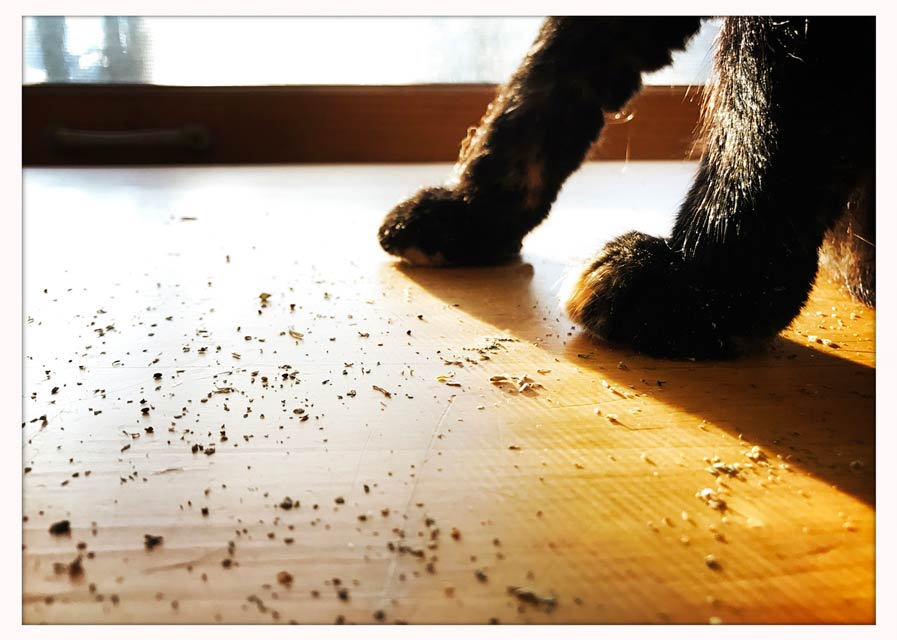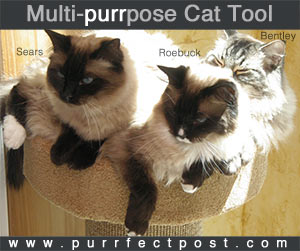Valerian Root: What Is It and How Can It Be Used for Cats?

Valerian root is an herb that has been used for centuries in people to combat anxiety, insomnia, and high blood pressure. It has a calming effect on the human nervous system. Scientists believe this effect is the result of its ability to increase GABA (Gamma-aminobutyric acid) levels in the brain.
Valerian has the opposite effect on cats, often causing hyper-excitability similar to that seen in some cats when they are exposed to catnip.
Indoor Cats Need Enrichment
Cats that stay inside can sometimes suffer from stress and boredom. It's essential to create an enrichment plan that keeps them engaged, practicing their hunting behavior, and moving around, so they don't become overweight. Some ways to do this include:
- Providing lots of good quality scratching posts. Scratching relieves stress in cats. They use it to mark territory and blow off steam. It also provides exercise and stretching for the muscles in the cat's body from the toes through the neck and shoulders.
- Making time every day to engage in interactive play. Use wand toys to imitate bird and rodent behavior, so your cat can engage in prey stalking and pouncing behavior. Not only does this relieve mental stress for cats but it also provides crucial exercise. Just be sure to put the wand toys away when you aren't supervising your cat because they can get wrapped around your cat's extremities, causing strangulation or loss of limbs.
- Providing toys that your cat can play with alone. A cardboard box, paper bag with the handles cut off, and throw toys that can be batted around are all great ways to give your cat enrichment and exercise when you aren't around. You can learn more here: "Clever DIY Cat Toys."
- Using puzzle toys. Giving a cat a toy filled with food that he can work on over time is a great way to provide mental stimulation. You can also break your cat's food up into several small amounts and hide them around the house so your cat can "hunt" them down throughout the day.
-
Building a catio. Allowing a cat to go outside can be great enrichment and exercise, but it's not very safe. Other animals, cars, humans, parasites, and communicable feline disease all lurk out there. However, there are many ways to create safe, enclosed spaces outside so your cat can spend time out there enjoying the sights and smells without being exposed to the dangers.
- Giving your cat vertical space to enjoy. Many cats like to be up high where they can see what's going on below them without being directly involved in it. Giving your cat vertical space to enjoy, such as tall cat trees, is a great way to provide enrichment.
- Engaging in regular training sessions. Training your cat to respond to commands or do tricks is very stimulating for him. Make it a routine to spend time training your cat daily. Not only does it provide good exercise and keep your cat mentally sharp, but it also provides terrific bonding opportunities for the two of you.
Another great way to provide enrichment for your indoor cat is to give him a substance that stimulates the brain through the olfactory system. The best known of these is catnip. However, there are several others, including honeysuckle, silver vine, and valerian root.
How Does Valerian Root Affect Cats?
The actinidine in valerian root acts as a stimulant to some cats that are exposed to it. These cats will often begin rolling around, playing, and acting excited. They may also drool. The playful feeling that seem to be induced by valerian provides mental stimulation and, often, exercise because cats like to run, chase, and pounce after being exposed to valerian root.
Some cats that aren't affected by catnip might show a reaction to valerian root. There are some cats that don't seem to react to valerian as well.
As with catnip, it might be possible for a cat exposed to valerian root to act more aggressive than usual. It's important to watch your cat closely the first few times you give valerian root and, if you see signs of aggression such as growling, hissing, or laying of the ears back on the head, withdraw and allow your cat to return to normal without interacting with him.
How to Give Your Cat Valerian Root
There are some cat toys available which are filled with valerian root. Some people also give a small sprinkling of dried, finely minced root to their cat. If you do that, make sure it's cut small enough so it isn't a choking hazard and give only a small amount at a time.
Do not give your cat human valerian root supplements, pills, or liquids because they might be too strong for your cat or contain other ingredients that are harmful to cats.
Because it has a strong odor that offends many people, you might wish to keep your valerian root or valerian cat toys put away in a sealed container between uses.
You May Also Like These Articles:
Honeysuckle: An Alternative to Catnip
What Does Catnip Do to Cats? Why Do Cats Like Catnip?
Interactive Playing with Wand Toys
Obesity in Cats: Overview of Dangers and Solutions
Why Does My Cat Chew on Electrical Cords?
Amazing Cat Facts to Know and Share
Notice: Ask-a-Vet is an affiliated service for those who wish to speak with a veterinary professional about their pet's specific condition. Initially, a bot will ask questions to determine the general nature of your concern. Then, you will be transferred to a human. There is a charge for the service if you choose to connect to a veterinarian. Ask-a-Vet is not manned by the staff or owners of CatHealth.com, and the advice given should not delay or replace a visit to your veterinarian.






